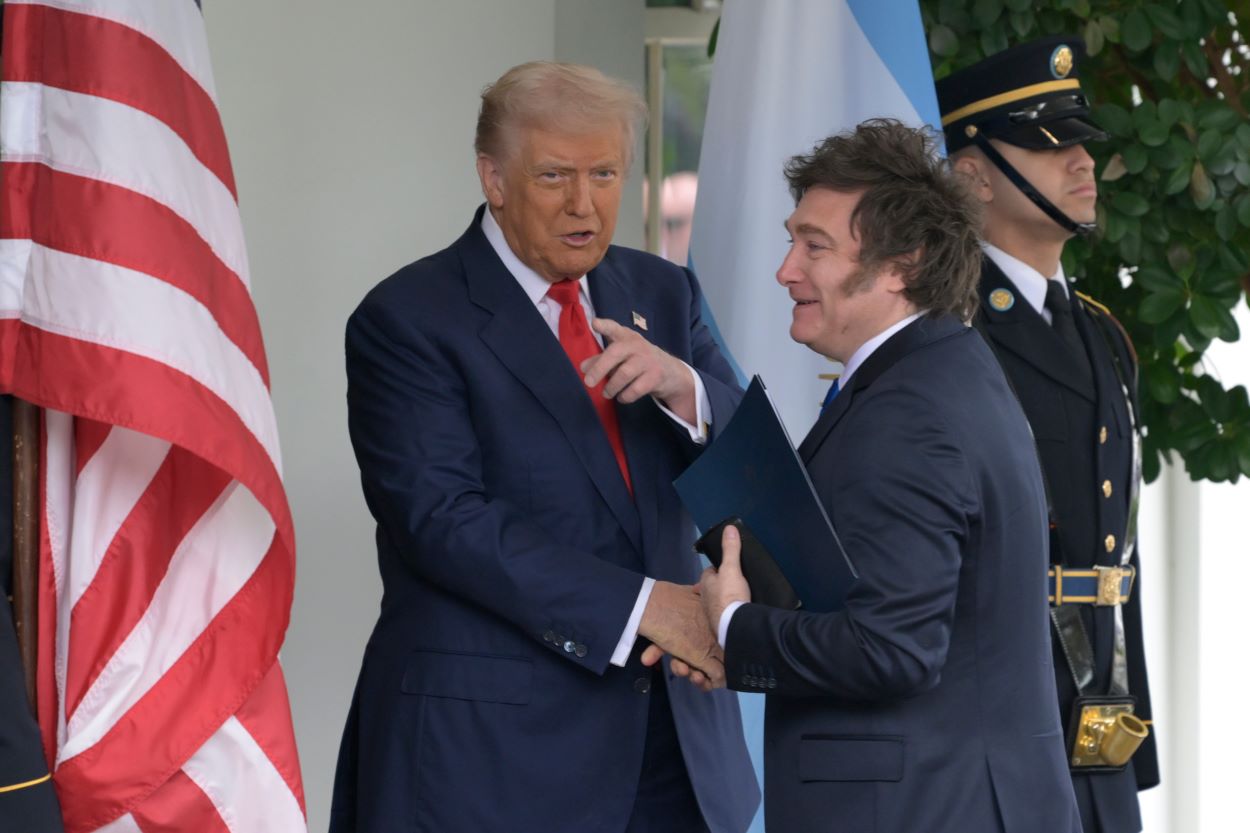Summary - Latin America Goes Global: Americas Quarterly Spring 2013 Launch
Summary - Latin America Goes Global: Americas Quarterly Spring 2013 Launch
Panelists discussed Latin America's growing economic clout and the increasing importance of global trade ties.
Introduction:
- Geoffrey Cowan, President, The Annenberg Foundation Trust at Sunnylands
- The Hon. David Dreier, Chairman, The Annenberg-Dreier Commission at Sunnylands
- Amb. Mike Moore, Ambassador of New Zealand to the U.S.
Keynote Address:
- His Excellency Alejandro Toledo, former President of Peru
- Gustavo Arnavat, United States Executive Director, Inter-American Development Bank
Panelists:
- Andy Baker, Associate Professor of Political Science, University of Colorado
- Mariano Bertucci, University of Southern California
- Daniel Kurtz-Phelan, Senior Fellow, Centre for Policy Research, New Delhi
- Jeffrey Schott, Senior Fellow, Peterson Institute for International Economics
- Christopher Sabatini, Editor-In-Chief, Americas Quarterly; Senior Director of Policy, Americas Society/Council of the Americas (Moderator)
- Carol Wise, Associate Professor of International Relations, University of Southern California (Moderator)
Summary
During a day-long May 28 symposium at the Annenberg Space for Photography in Los Angeles, Americas Quarterly launched its Spring 2013 issue, “Latin America Goes Global.” Two panels discussed the changing economic environment in Latin America, as well as the increasing importance of global cooperation and integration. Participants also spoke about the role of the Trans-Pacific Partnership and other transnational networks, China’s growing presence in the region, and perceptions of the United States in Latin America.
[[nid:49746]]
Changing Political and Economic Dynamics in Latin America
To open the event, U.S. Congressman David Dreier and New Zealand’s Ambassador to the U.S. Mike Moore highlighted shifts in Latin America and the United States’ changing role in the Western Hemisphere over the last 20 years. Dreier contrasted Latin America in the 1980s and 1990s—struggling with unstable economies and internal conflicts—with today’s Latin America, where economies are flourishing and democracy has become the norm. Noting these changes, Moore said that while the region is becoming increasingly integrated into global markets, dynamic transnational agreements will be critical to ensure consistent growth.
AS/COA’s Christopher Sabatini noted that Latin America has become an important trade partner for the United States in its own right. He also explained that the United States’ influence in Latin American foreign policy has declined as countries in the region become empowered to follow their own foreign policy agendas.
The Trans-Pacific Partnership
The Trans-Pacific Partnership (TPP)—an alliance among 11 Pacific Rim countries—demonstrates Latin America’s increased global presence, panelists said. Jeffrey Schott, author of “The Next Big Thing? The Trans-Pacific Partnership & Latin America” in the recent issue of AQ, explained that the TPP will allow the Pacific Alliance—a bloc that includes Chile, Colombia, Mexico, and Peru—to increase its exposure to Asia-Pacific economies. The TPP will also serve as a model of integration for other countries in the region, he said. Schott added that the TPP creates incentives to advance domestic reforms, which can cultivate more predictable economic climates attractive to foreign investors. The panelists agreed that the TPP will serve as a way to update the 1994 North American Free Trade Agreement (NAFTA) without having to renegotiate it. Though the world has changed since NAFTA went into effect, panelists noted that the TPP will offer a way to keep NAFTA’s principles alive while adapting them to the evolving global context.
[[nid:49747]]
Transnational Networks, Education, and Cross-Border Exchanges
Panelists said that in addition to increasing economic opportunities, transnational networks and trade agreements offer a platform for sharing best practices across countries to promote human rights, improve education, and help alleviate poverty. By increasing global GDP, trade and integration opens doors to pioneer advances in education and social programs and enhance standards of living and quality of life, including groups that have been historically marginalized. Highlighting Brazil’s Science without Borders program and the 100,000 Strong educational exchange initiative in the United States, panelists noted that successful educational exchanges and social programs serve as models for shaping policies in other countries.
China’s Role in Latin America
Latin America’s increasingly dynamic economies attracted greater levels of Chinese investment in recent years. However, moderator Carol Wise pointed out that China’s larger role in the region does not necessarily challenge U.S. influence there. Rather, the United States and China have cultivated complementary roles in Latin America, she said. While China has invested heavily in infrastructure in the region and largely avoided manufactured goods and technology, the United States has focused on services, trade, technology, and intellectual property protection. Moreover, the United States remains a much more significant initiator of foreign direct investment in Latin America than China.
[[nid:49798]]
Perceptions of the United States in Latin America
Increased trade and connectivity also influence Latin Americans’ perceptions of the United States. Andy Baker, author of the article “Gringo Stay Here!” in the new issue of AQ, challenged the perception that Latin Americans dislike the United States. In fact, Baker argued that Latin Americans’ views of the United States are overwhelmingly positive, due in large part to trade relations. He noted that countries in Latin America with a higher volume of trade with the United States and a greater number of U.S.-bound migrants have the most positive attitudes toward the United States. As a result, Baker argued, trade agreements like the TPP and progressive immigration policies become a form of public diplomacy that generates goodwill across borders.








